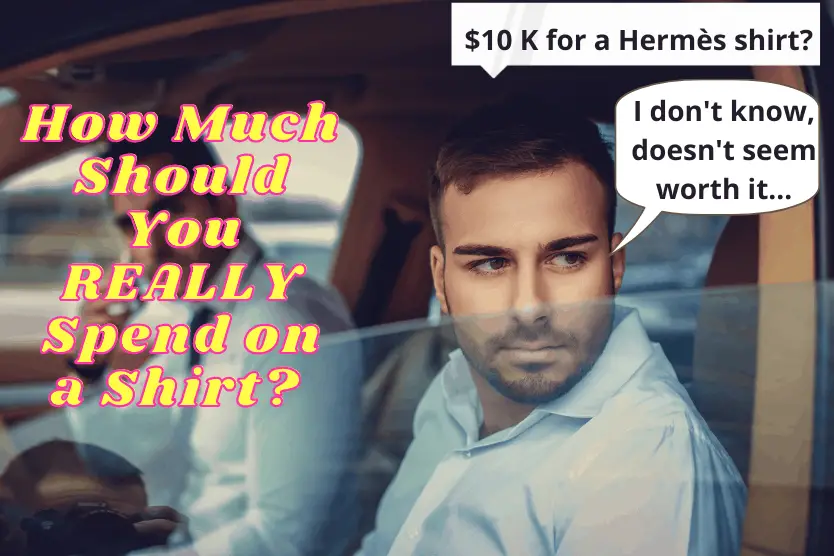An appealing price point is something that’ll vary for every customer, however, there is a price range that’ll often be telling if a shirt is worth it or not.
Above the $30-40 price range for most people will be considered too expensive for a shirt. The price of a shirt can be attributed by things like the brand power, quality of materials used, location of labour and fair labour costs etc. If your shirt is $30, then chances are it cost $5-10 to make total.
But there are a lot of factors to take into consideration, even if we take out the labels selling them. Quality of materials matters a lot, especially if you care about quality and fair labour costs.
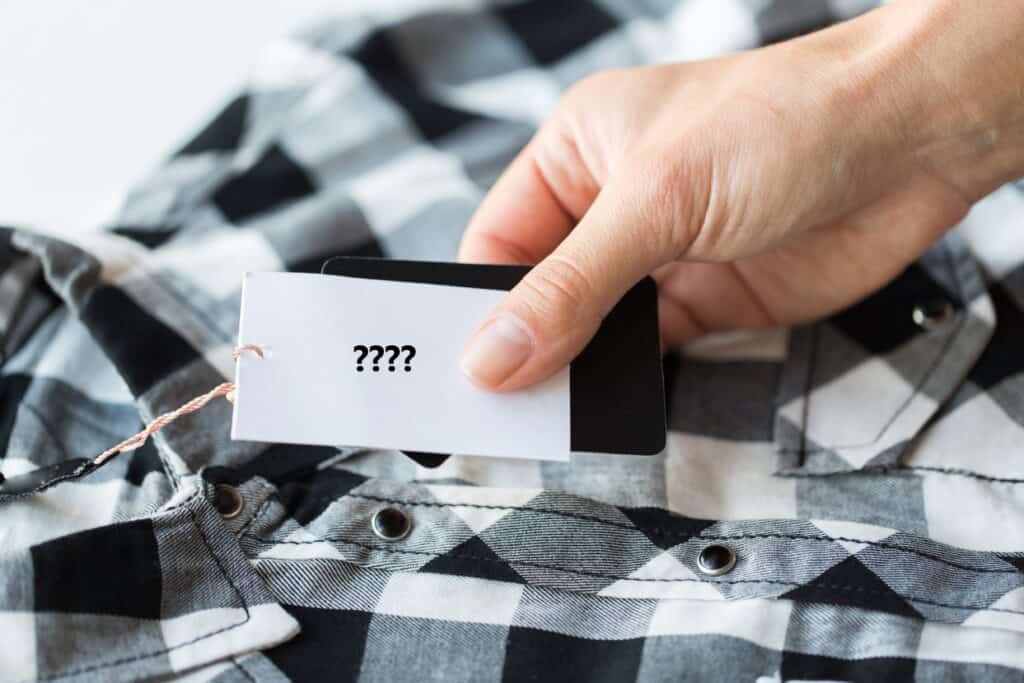
How much should a shirt cost
How much should a shirt cost depends on the factors such as the brand behind it, the quality of materials sourced and used, the labour location and type, and the pricing of competitors within the industry.
With a global consensus on the benefits of sustainable fashion, the pricing of a shirt can be between the $30-$40 range – IF all manufacturing processes conducted are held to a fair standard, depending on the location of labor being produced, and materials sourced.
“We’ve been trained to want to pay less, even when we can afford more.”
Claire Press – The Sydney Morning Herald
“Someone always pays the cost for too cheap” – are the words that Ms Press claims, as she espouses on her rant going into detail on the problems with “unethical fashion”, and how our need to want to pay less can actually harm us long term.
And she has a point.
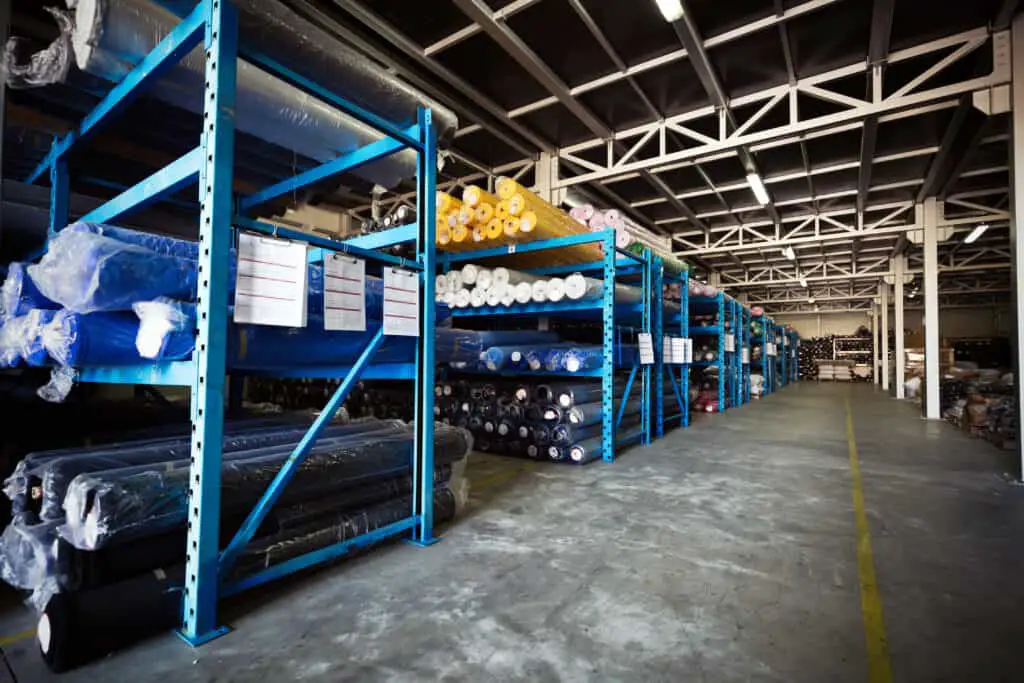
The problem with not knowing where your clothes come from
There’s a problem in the appeal industry where we customers are not told enough as to where our clothing comes from, and why our clothing is priced the way it is (both on the extreme high end and low end.)
And no one wants to overpay if they don’t have to.
But you’ve got to ask yourself, how did that $5 shirt of yours come to be $5, and did anyone along the production line “lose” in some way as a result of that?
Sustain Your Style did a wonderful expose piece on the differences between companies paying the minimum wage, and a living wage (link will take you to their site.)

How cheap can a shirt be and is it worth it?
There’s a point of diminishing returns where the low shirt price tag will come at the cost of financially harming the people within the supply chain (farmers, sewers, factory workers.)
It sucks for sure, and the industries themselves are also to blame. But until more brands begin transitioning into ethical spaces, the economies of scale will remain so that there is less demand (therefore a higher price) for sustainable clothing.
But if we go by what’s “fair” – then shirts should indeed cost way more than $5 (in most cases.)
You can learn more about this at CleanClothes.org (link to official site)
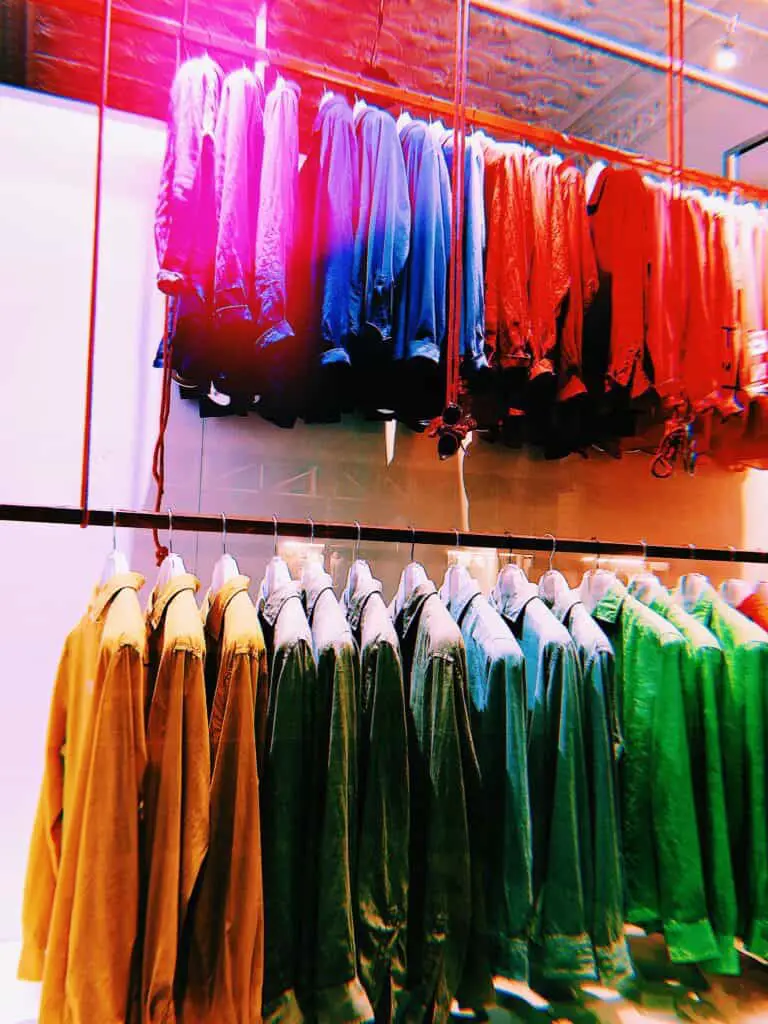
Shirt cost variables – What makes up the price
There are few factors that make up the cost of a shirt such as:
- Direct costs ( supplies and materials sourced, actual blank shirt, shipping etc.)
- Labor overhead (paying for laboreres, hours spent making the shirt, wholesale purchases etc.
- Pricing stratergies
We’ll tell you what makes the price “worth it” below!
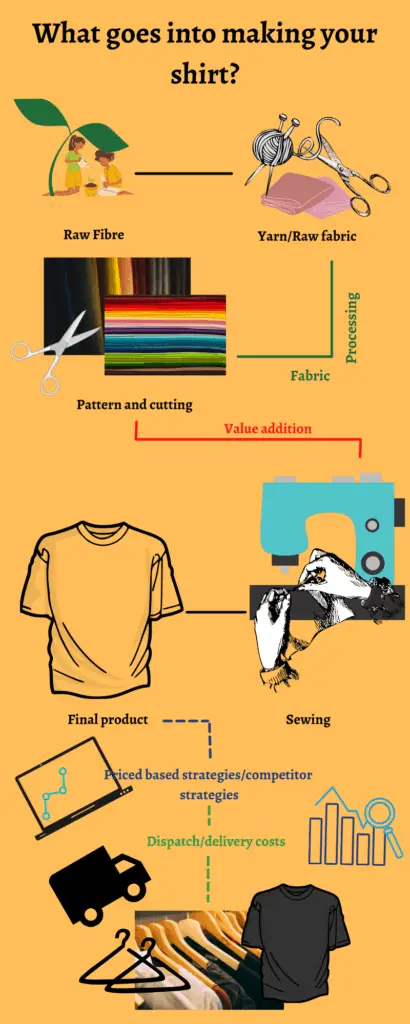
As you can tell from the simple infographic above’ there’s a lot that goes into the pricing of your shirt, from the direct costs associated with labourers extracting raw materials from the fields to the conversion process that turns that raw material into useable fabrics, the cutting and sewing, and the shipping.
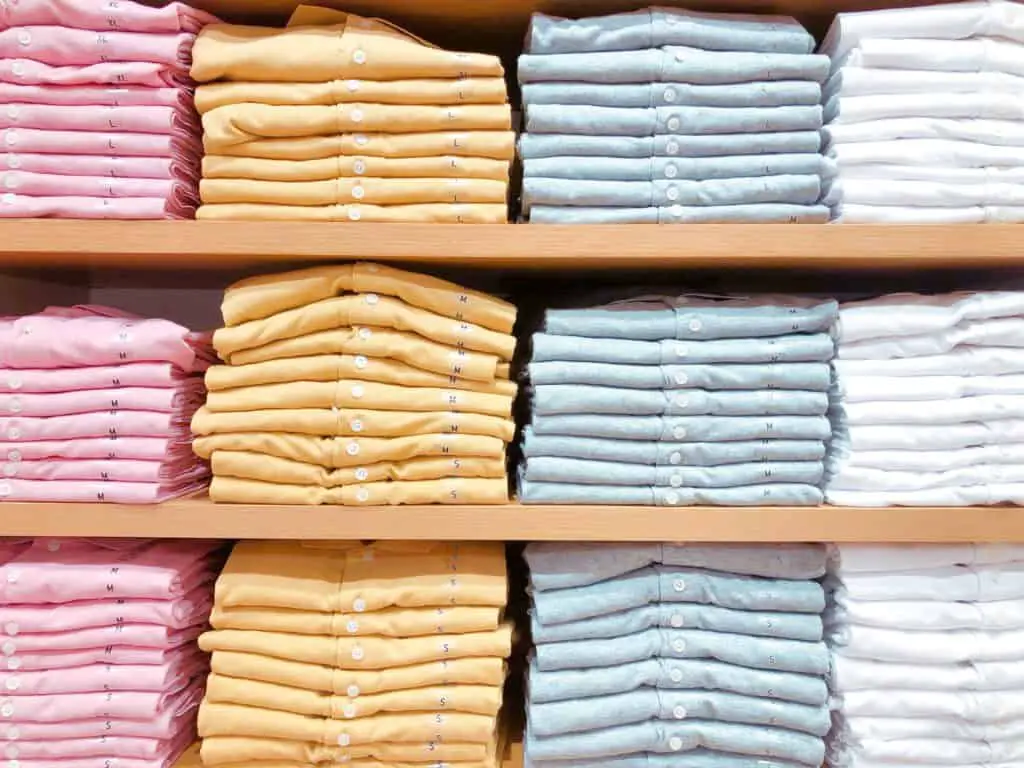
What makes the price of a shirt “worth it”?
Ethical fashion does, more often than not, come with a more expensive price tag than its fast-fashion counterpart. Though a higher price point does not always mean an item has been ethically made.
To figure out what makes a shirt worthy for its price, you must look to the quality of materials made, whether it was ethically produced, the country of production and the brand that it comes from, as the pricing strategy from a more well-known brand may dictate a higher (unnecessary) markup.
Look at the material first
Look to the material of the shirt to get a best first guess as to the quality of its make-up. Use this Ultimate Suit Fabric Guide to understand why materials like cotton and polyester may not be as expensive as luxury fabrics like silk and merino wool, as this straight off the bat will impact the price the most.
Look to the label – Organic or not?
Then more specifically look to its labelling, if it’s “ethically produced” then chances are it’ll be worth more (however not always.) This is because more measures, time and money will be spent to produce such clothing.
You can look for any such “organic” labels to indicate this fact on the tag of your shirt. Does it confer to GOTS (Global Organic Textile Standard) guidelines?
Look to the country of manufacturing
Simply put there will be higher labour and manufacturing costs in places like Europe or the West compared to Asia. If your shirt states that it is made (not designed) in places like Europe then you can bet your behind that it likely will cost more.
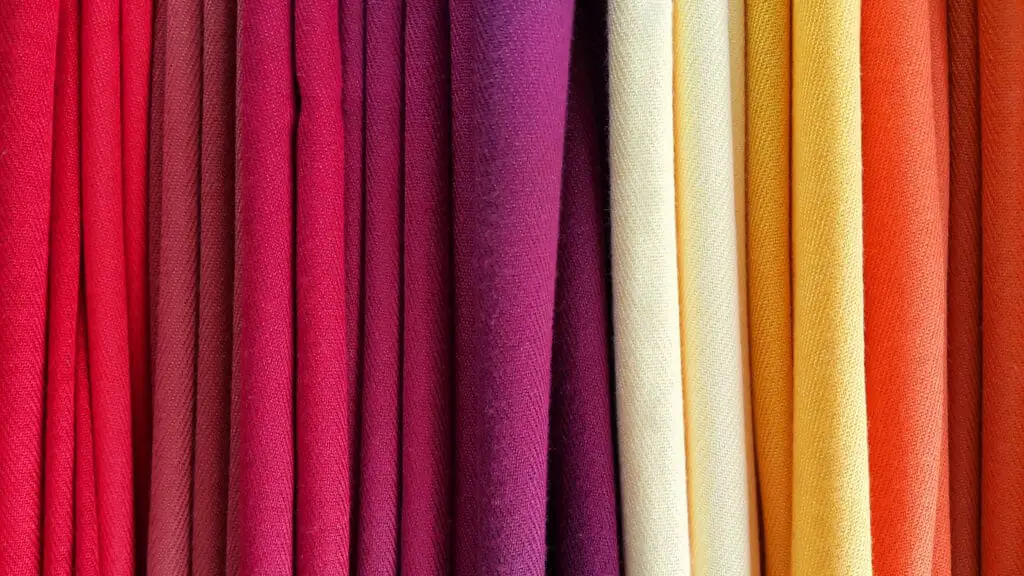
More advanced technique – Evaluate your clothing’s weave fabric
This one is a little more tricky. Weave fabric is simply the method of textile production where your pieces of yarn come together to form a fabric. There 3 main types of weave fabrics (and countless more obscure ones.)
- Plain Weave
- Twill Weave
- Satin weave
The intricacies of how fabric weaves work are not as important, but just know that the type of weave fabric your shirt is will directly correlate with the price of a shirt (and if it’s indeed worth the cost or not.)
Plain weave is the simplest of weaves, they wrinkle easily and have less absorbency. Twill weave has a higher thread count and therefore is more durable, opaque, and thick.
Twill weave is a durable fabric for clothing and upholstery, known more for its medium-range strength and opaqueness, though this weave lacks stability.
Satin weave produces a glossy, smooth, and/or “lustrous” look, along with a glossy surface. Satin weave (of the same yarn count) is also denser and thicker =, therefore, costs more to make.
If you want to know what these weaves look like then check out this fabric guide I made for reference (scroll to the near bottom.)
This is a general guide to help you make a better-informed decision on what is more worth it to you, as it’s all subjective.
The tips above don’t yet take into account the brand behind the products, which as we know, can make a huge difference in the markups of clothing prices.
Branding markups are not evil, as companies have to make money somehow, but what you want to concern yourself are the pricing strategies that some brands choose to employ.
Example of problems with priced based strategies
Problems can start to arise when companies source high-quality materials (increasing labour prices along the way) that are then further inflated with ridiculous markups simply due to competition and/or cost-based strategies.
Here’s an example of a priced based strategy in play:
If Gucci is charging $400 for a high-quality shirt, it may have cost $50-$60 to make, but since its Gucci (and across the street Armani is selling their shirt for $400), they’ll also want to make a similar profit whilst continuing to being known for their exclusivity in the first place.
In cases like these, it’s important to be able to distinguish (at least to a degree) the line between brands trying to “break-even”, and brands charging sh*t loads because they simply can.
How to avoid getting cheated by brands that charge too much
Avoid obnoxious prices by brands following the tips below.
Avoid luxury labels
If you are trying to save money on unnecessary purchases then avoid any brands of shirts from luxury brands (Gucci, Channel, Armani, Hermes etc.) Clothing from these labels might be made of good quality, but will almost 100% have a high markup due to their cemented status as being known as a “luxury” brand.
They will make hand over fist profits due to their branding power, which offers nothing where quality is concerned, but everything where “status” and “recognition” is.
Avoid clothing from brands that pride themselves on exclusivity
Exclusivity is another massive factor and one that continues to prove that a higher price does not equate to ethical and sustainable production. Sometimes the high price is what you pay for being a part of that exclusivity.
As is the point with many companies driven by trends, this exclusive mentality is what keeps prices high, with no thought given to the end stage of a product’s life.
If you see a shirt with a high price tag within a luxury exclusive label, assume that it’s probably made of good quality (probably), but that it isn’t necessarily worth the high price tag – unless you want to buy it for that sense of exclusivity ONLY.
“Get off your wallet buddy.”
-Den of Thieves (2018)
Unlike County Sheriff “‘Big Nick’ O’Brien'”, you best stay abreast of the prices that some of the big-name brands will try and charge you and employ some reconnaissance before taking the plunge.
Unlike Nick, you needn’t stay stingy, just vigilant.
Stay Rogue.

